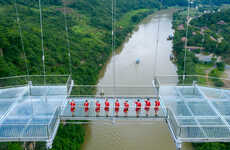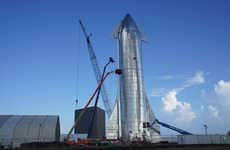



New building designs consider the environmental cost from start to end-of-life
Trend - Brands in construction are now taking steps to accurately understand the building's environmental impact through an "embodied carbon" lens. Embodied carbon refers to the total carbon footprint of the materials used throughout the supply chain–from extraction and manufacturing through to the landfill or recycling plant.
Insight - In the wake of climate change, information has emerged about the detrimental environmental impacts of various production and consumption methods. Brands are no longer doing enough by simply taking a product's production into consideration but must consider its end-of-life cycle. Conscious consumers are now demanding brands identify these blind spots in production to help tackle climate change.
Insight - In the wake of climate change, information has emerged about the detrimental environmental impacts of various production and consumption methods. Brands are no longer doing enough by simply taking a product's production into consideration but must consider its end-of-life cycle. Conscious consumers are now demanding brands identify these blind spots in production to help tackle climate change.
Workshop Question - How can you consider the life-long consequences of a product or service and reduce its environmental effect?
Trend Themes
1. Embodied Carbon Analytics - Emphasis is now placed on developing innovative tools for assessing a product's embodied carbon emissions throughout its life cycle to tackle climate change.
2. Circular Building Materials - Brands are exploring ways to create circular building materials that can be reused or recycled to minimize embodied carbon emissions and reduce waste.
3. Green Building Policies - Green building policies that require the use of low-embodied carbon materials and support whole life-cycle carbon assessment are becoming a trend that is gaining traction.
Industry Implications
1. Construction - The construction industry can leverage new technologies and materials to reduce embodied carbon emissions and promote sustainability.
2. Architecture - Architects and designers can incorporate sustainable building practices and materials in their designs to minimize embodied carbon and create a positive environmental impact.
3. Software Development - Software developers and tech companies have an opportunity to create innovative tools and apps that can calculate, compare, and minimize embodied carbon emissions in building and construction.
4 Featured, 35 Examples:
181,763 Total Clicks
Date Range:
Jan 21 — Mar 21
Trending:
Mild
Consumer Insight Topics:



































